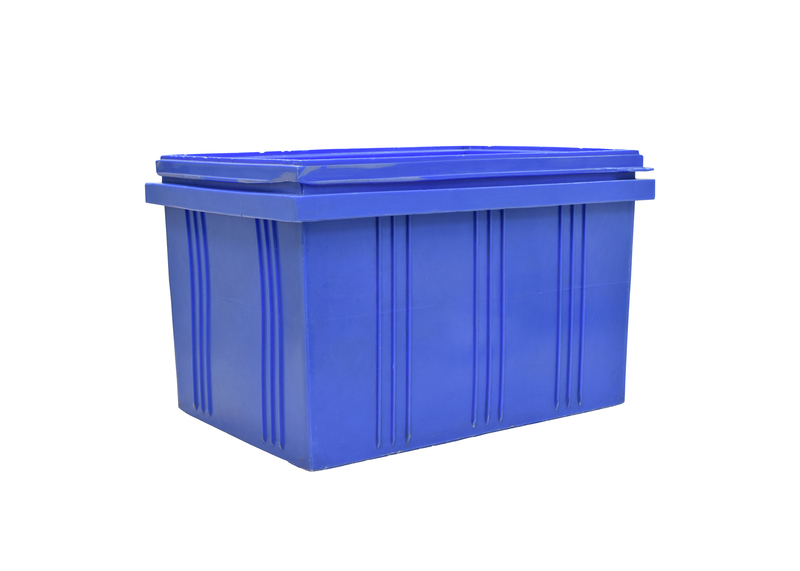Easily Transitioning Your Bed and Mattress
Posted on 27/05/2025
Easily Transitioning Your Bed and Mattress: The Complete Guide for a Smooth Switch
If you're planning to move, upgrade, or simply change your sleeping setup, understanding how to easily transition your bed and mattress is essential. A smooth transition isn't just about convenience; it ensures your continued comfort, mattress longevity, and even better sleep hygiene. In this in-depth guide, we'll cover everything you need to know to move, swap, or upgrade your bed and mattress with confidence.
Why Properly Transitioning Your Bed and Mattress Matters
Making a move--whether to a new house, a different room, or upgrading your bed--can be an exciting new chapter. However, overlooking the right way to transition your bed and mattress can lead to discomfort, damage, or back pain. Let's explore why a thoughtful approach is so important:
- Protects your investment: Mattresses aren't cheap. Moving or upgrading with care avoids unnecessary wear or warranty-voiding mishaps.
- Prevents injuries: Beds and mattresses are heavy! Incorrect lifting or moving can result in aches or strain.
- Ensures sleep quality: A seamless setup transition means a supportive, hygienic, and comfortable sleep environment from day one.
- Keeps your space organized: Proper planning avoids chaos in your new bedroom or sleeping area.

When Should You Transition Your Bed and Mattress?
Transitioning your mattress and bed can take place in various scenarios:
- Moving to a new home: One of the most common times to move beds and mattresses.
- Upgrading your sleep setup: Perhaps you're ready for a larger bed, a different style, or a new model.
- Kids outgrowing their beds: From toddler to twin, or twin to full-size, transitions are a part of growing up.
- Health needs changing: You may need a mattress better suited for back pain, allergies, or other health concerns.
- Renovations and redecoration: Planning a fresh look for your bedroom? It's the perfect time to reconsider your sleep setup.
Preparing for Your Bed and Mattress Transition
Preparation is key to easily transitioning your mattress and bed. Here's what you need to do before you make the big move:
1. Assess Your Needs and Space
- Measure your new or target sleeping area.
- Determine the ideal bed and mattress size.
- Evaluate access--stairways, doorways, and corners can affect your mattress move.
2. Gather Your Tools and Supplies
Having the right equipment makes all the difference. Consider:
- Mattress bags or heavy-duty plastic covers
- Moving straps or furniture sliders
- Basic toolkit for disassembling the bed frame (screwdrivers, Allen keys, etc.)
- Labels and small containers for hardware
- Tape and markers
- Cleaning supplies for both the old and new spaces
3. Enlist Help
Mattresses and bed frames can be heavy and awkward to handle alone. Ask friends, family, or professionals for assistance to avoid injuries and property damage.
Step-by-Step: How to Easily Transition Your Bed and Mattress
Follow these clear steps to ensure your mattress and bed transition goes off without a hitch:
Step 1: Clean and Prep Your Mattress
- Vacuum both sides of your mattress to remove dust, hair, and dirt.
- Spot clean stains with a gentle fabric cleaner or a baking soda paste.
- Air out the mattress before wrapping or moving, if possible, to prevent mold.
- Use a sturdy mattress bag or wrap in thick plastic for protection during transport.
Step 2: Disassemble the Bed Frame
- Strip off bedding, pillows, and decorations.
- Remove slats, side rails, and headboards using the right tools.
- Place all small parts in labeled bags or containers.
- Wrap delicate or wooden pieces in moving blankets or bubble wrap.
Step 3: Safely Move Your Mattress and Bed Frame
- Clear pathways and open doors fully for easy movement.
- Angle the mattress upright for tight spots, using straps for stability.
- If stairs are involved, have helpers stationed at both ends of the mattress.
- Be gentle to avoid bending or damaging the mattress, especially memory foam or hybrids.
- Avoid dragging to protect both the mattress/beds and your floors.
Step 4: Set Up Your New Bed and Mattress
- Clean your new space thoroughly before setup.
- Lay out all frame parts and hardware in the right order.
- Assemble the bed frame, double-checking for stability.
- Remove mattress wrap only when in the bedroom.
- Allow foam mattresses to expand for at least 4-24 hours if new or compressed.
- Make the bed with clean, comfortable bedding to enhance your first night's sleep in the new setup.
Tips for Transitioning to a New Mattress
If you're not just moving the old one but also switching to a new mattress, here's how to make the transition easy on your body and your sleep:
Gradually Adjust to a New Sleeping Surface
- Break-in period: It can take two to four weeks for your body to fully adjust to a new mattress.
- Supportive bedding: Use pillows or toppers if needed during the adjustment phase.
- Monitor your comfort: Pay attention to pressure points or sleeping temperature.
Know Your Mattress Type
- Memory foam and hybrids: These often arrive compressed and need to expand before use.
- Latex: Slightly stiffer, but durable and hypoallergenic.
- Innerspring: Classic feel, but watch for sagging if the move was rough.
Don't Neglect the Base
- Upgrading the foundation or box spring can greatly improve the feel and support of your new mattress.
- Double-check compatibility between your new mattress and any existing bases or adjustable frames.
Common Challenges When Transitioning Your Bed and Mattress (and Solutions)
Easily transitioning your mattress and bed frame can be more complicated than expected. Here's how to handle potential hurdles:
Tight Spaces or Awkward Staircases
- Measure all pathway dimensions in advance.
- Use a flexible foam mattress if doorways are narrow.
- Consider bed-in-a-box options for upper-level apartments.
Mattress Damage During Moving
- Always use high-quality mattress bags or covers.
- Avoid folding unless the mattress is specifically designed for it.
- Keep away from moisture and extreme temperatures during transport.
Lost Hardware
- Take photos of your bed frame assembly before disassembling.
- Use clearly labeled bags or containers for nuts, bolts, and screws.
- If hardware is missing, many major brands offer replacements or use universal sets from home improvement stores.
Noisy or Unstable Setup
- Retighten all bolts and joints after assembly.
- Place felt pads under legs if on a hard floor to reduce noise.
- If you notice wobbling, take apart and reassemble carefully for better alignment.
How to Transition Your Child from Crib to Bed
Parents often face a unique challenge: helping toddlers or kids transition to their first "big kid" bed. Here's how to make the process tear-free:
- Get your child involved in selecting their bedding and pillow for excitement and ownership.
- Keep the new bed in the same room or location, if possible, for familiarity.
- Use rails for safety, especially for toddlers moving from crib to twin bed.
- Stick to consistent sleep routines to minimize bedtime disruptions.
Eco-Friendly Tips for Mattress and Bed Transitions
Thinking about the environment while upgrading or moving your mattress? Follow these tips:
- Recycle your old mattress through municipal programs or retailers.
- Donate a gently used mattress to local charities or shelters (be sure to check their policies).
- Choose a new mattress made from eco-friendly materials and sustainable manufacturing practices.
- Repurpose bed frames or headboards as garden supports, benches, or decor for a creative touch.
Making the Most of Your New Sleep Setup
You've completed your bed and mattress transition--now optimize your sleep:
- Invest in new, high-quality sheets and bedding for enhanced comfort.
- Try a mattress protector to extend your mattress's lifespan and improve hygiene.
- Consider blackout curtains or white noise machines for a perfect sleep environment.
- Declutter your bedroom to create a calming sleep sanctuary.

Frequently Asked Questions About Transitioning Beds and Mattresses
- How often should I replace my mattress?
Most experts recommend every 7-10 years, or when you notice sagging, discomfort, or changes in sleep quality. - Can you fold a foam mattress to move it?
Only if the manufacturer states it's safe. Otherwise, folding can damage the structure or void warranties. - Is it worth hiring professional movers for a mattress?
Absolutely, if you have a heavy bed set, limited help, or tight spaces in your move. They have the experience and equipment to handle it safely. - What's the best way to clean a mattress before moving?
Vacuum thoroughly, spot clean stains, and allow time to dry before wrapping for transport. - Should I change my mattress when moving to a new home?
If your current mattress is in good condition and suits your needs, a move isn't always a reason to change. However, it's the ideal time to reassess comfort and health factors.
Conclusion: Your Guide to a Smooth Bed and Mattress Transition
With the right preparation, care, and approach, transitioning your bed and mattress can be a hassle-free process. Whether you're upgrading, moving, or helping someone else transition, following these best practices will ensure your sleep stays restful and your investment is protected. Bookmark this guide for easy reference the next time you plan a bedroom makeover or a big move--and make your transition as easy and comfortable as possible.
Are you ready to enjoy a refreshed, perfectly set up bed and mattress? Use these expert tips for your next move or upgrade and sleep better from the very first night!





